On May 17th, 1987, USS Stark was on patrol in the Arabian Gulf. Iraq and Iran had been at war for most of a decade, and things had escalated from a simple battle for territory into both sides trying to interdict the oil that was funding the other's war machine. Iran was faced with a trickier situation. They had cut off direct Iraqi access to the Arabian Gulf early in the war, so Iraqi oil was transshipped via neutral powers, such as Kuwait and Saudi Arabia, and those same powers were funding Iraq's war effort. Kuwait had finally become concerned enough to request American involvement in protecting its tankers, and while the actual program had yet to begin, the USN was increasingly active in the region. Iraq had the easier job of things, as Iran's main oil facilities were quite close to its territory and the tankers that moved its oil out of the gulf were relatively easy to attack with French-made Exocet missiles. In the previous 10 months, they had flown 340 sorties and launched 90 Exocets, which had reportedly damaged about 40 tankers. And while this was annoying to the insurance companies (because the Exocet was too small to be a serious threat to a tanker) bystanders were generally safe.
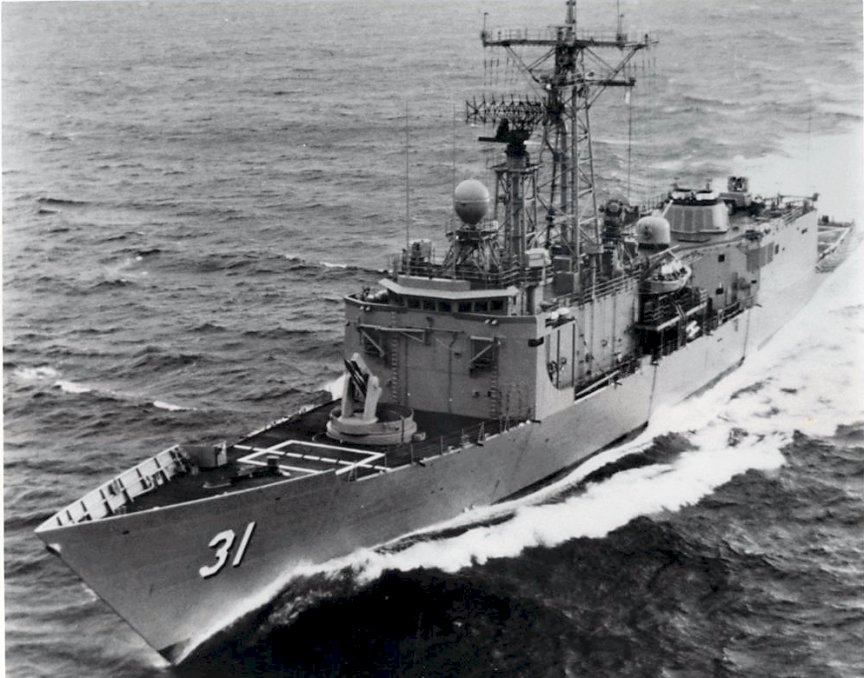
Stark earlier in her career
On this specific day, Iraq was deploying a new plane. The Dassault Mirage F1 had been the backbone of Iraq's naval strike force for several years, but its range was pretty limited, so the Iraqis had requested that Dassault modify a Falcon 50 business jet into a "trainer". A Mirage F1 cockpit was installed on the right side, and an Exocet hardpoint was fitted under each wing. As the plane, codenamed Suzanna,1 headed out over the Gulf, it was picked up by a USAF E-3 Sentry operating out of Saudi Arabia, which thought it was a Mirage F1, and classified it as a friendly fighter on the Link 11 network operating in the Gulf.
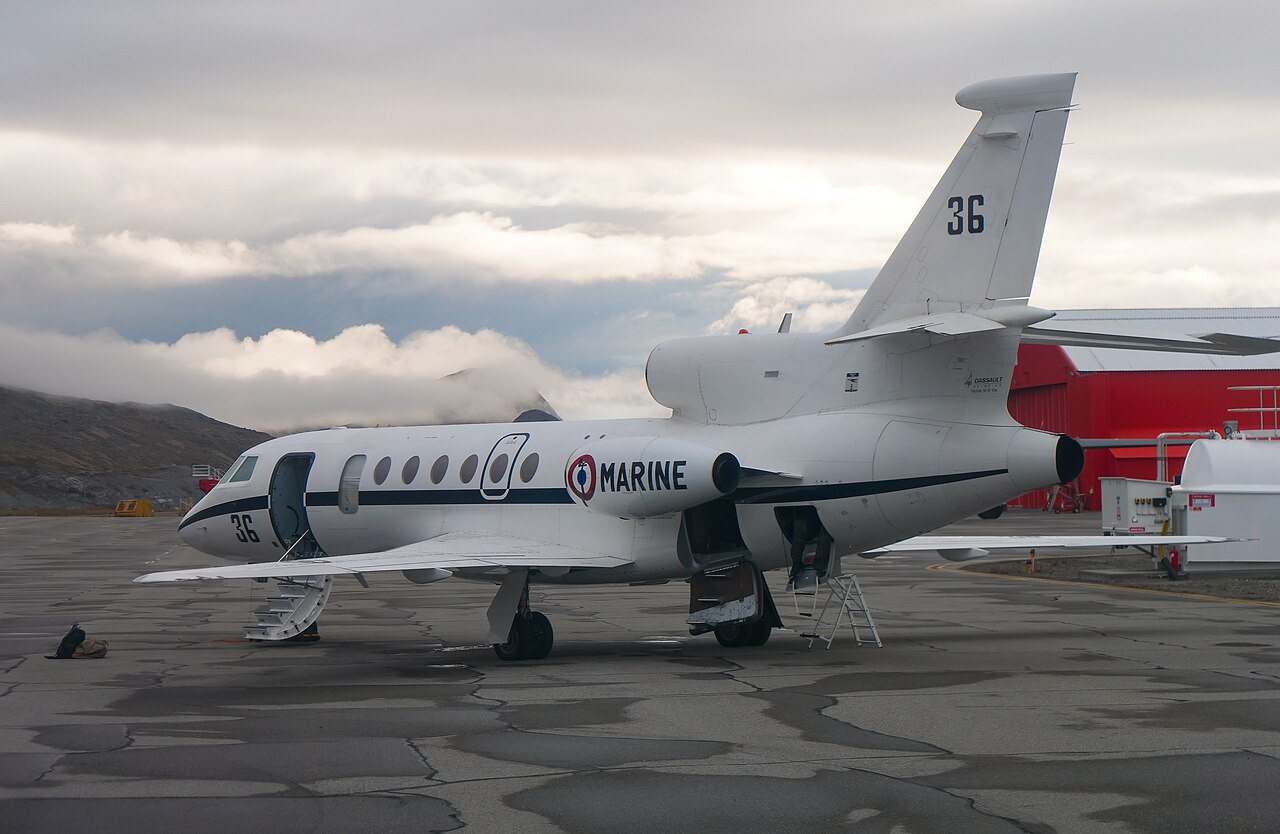
A Falcon 50 in military service
Unfortunately, the Iraqi pilot did not have access to any information beyond what was shown on his radar screen, and for reasons that have never been entirely clear, he zeroed in on the blip that was Stark, apparently thinking it was an Iranian ship. Stark's own radar picked the jet up, as did her ESM system, but nobody thought that the "friendly" "Mirage" was a threat, even after it turned and headed straight for them. The first missile was launched at 22 nm, and the second a minute later at 15 nm, moments before Stark transmitted the first message requesting the plane identify itself. The crew on duty did take some steps, like preparing to arming the SRBOC launchers and switching the Phalanx into "Standby" mode to warm it up, but it was too little, too late. A lookout topside saw the flare of the launch, but it took him quite a while to realize that the approaching blue dot was a missile, and by the time he passed the word, it was too late to do anything other than brace for impact.2
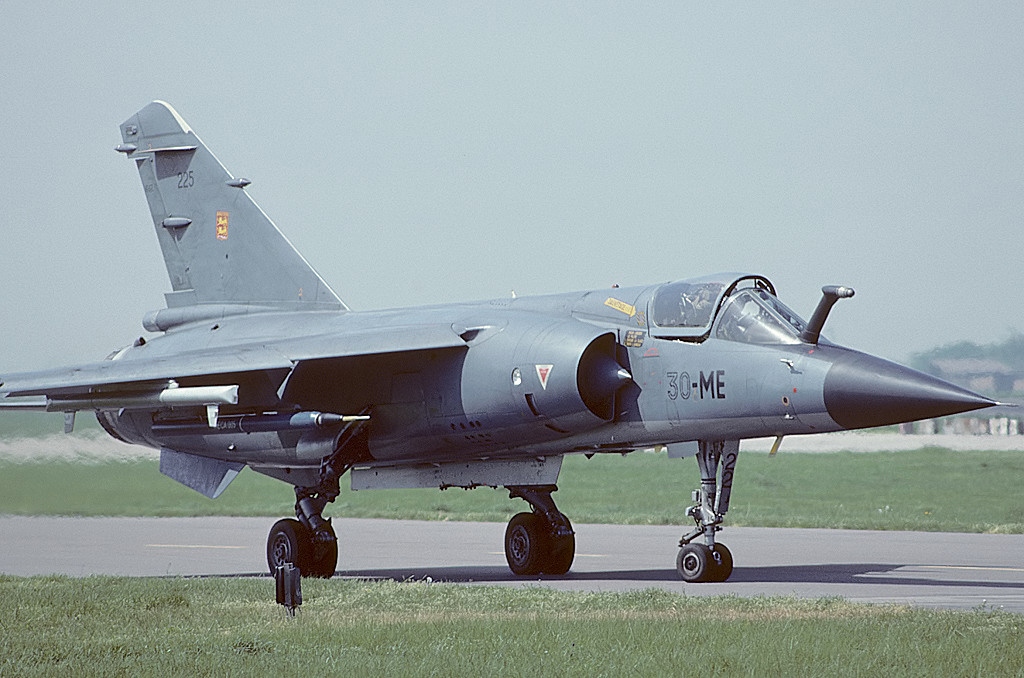
A Mirage F1
The Exocet struck Stark on the port side, just below the bridge, easily piercing the frigate's thin hull, followed by the port firemain. For whatever reason, the warhead failed to detonate, somewhat limiting the damage, although as the missile broke up, fragments passed all the way through the ship and exited on the starboard side. More dangerous was the fact the missile had been launched from only about half of its maximum range, so there was still plenty of rocket fuel aboard,3 turning two berthing compartments into a charnel house. General Quarters was sounded, but as the ship's crew began to run to their stations, the second missile struck. In a testament to the consistency of the Exocet's seeker, the impact point was only about 8' forward of the first missile's, but the fuze on this one worked, detonating the warhead about 3' inside the ship. This devastated an area about 30' around the point of impact, and sent a flash fire racing through open hatches and along the paths carved by the fragments of the first Exocet.
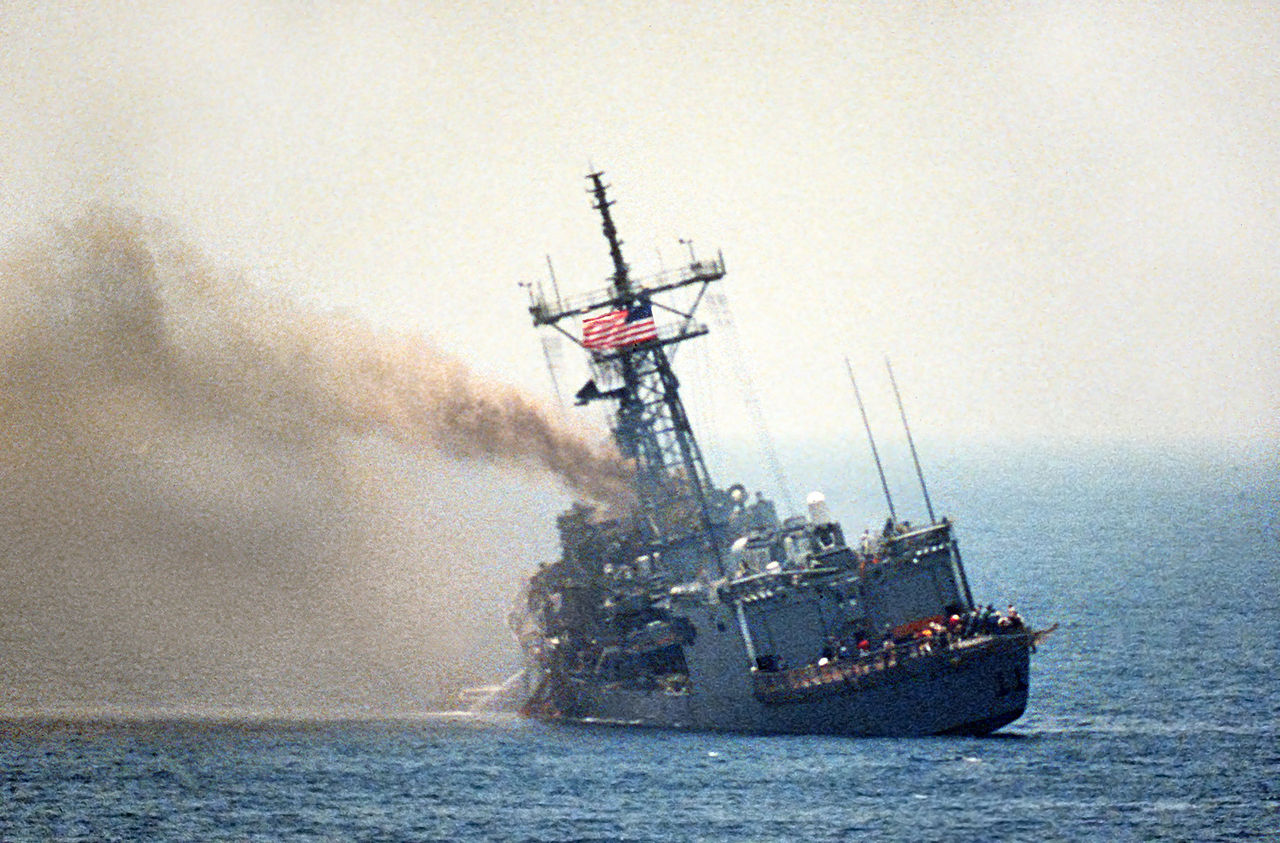
Despite suffering 20% casualties in the initial attack, Stark's crew began to fight back against the flames and smoke, although their efforts were hampered by a breach in the port fire main, which meant that hoses had to be brought from the aft circuit until the Damage Control Assistant, Lt. William Conklin, went into the burning compartment and closed the valves, his hands often sticking to the hot metal. But that still left the problem of fighting a fire that had reached 3000°F, far hotter than the 1800°F that the Navy usually trained for. The intense blaze began to spread between compartments as heat passing through bulkheads heated materials to the point they began to burn, and the smoke of burning plastics drove hose teams back. Even though a recent inspection meant that Stark had 300 canisters for the Oxygen Breathing Apparatus (OBA) aboard, three times the normal supply, they were quickly exhausted, and helicopters had to bring in three times that number from ships across the region. Eventually, even the bridge had to be abandoned, and there was serious concern that the flames would reach the magazine for the forward missile launcher, which couldn't be flooded because of the damage to the forward fire main.
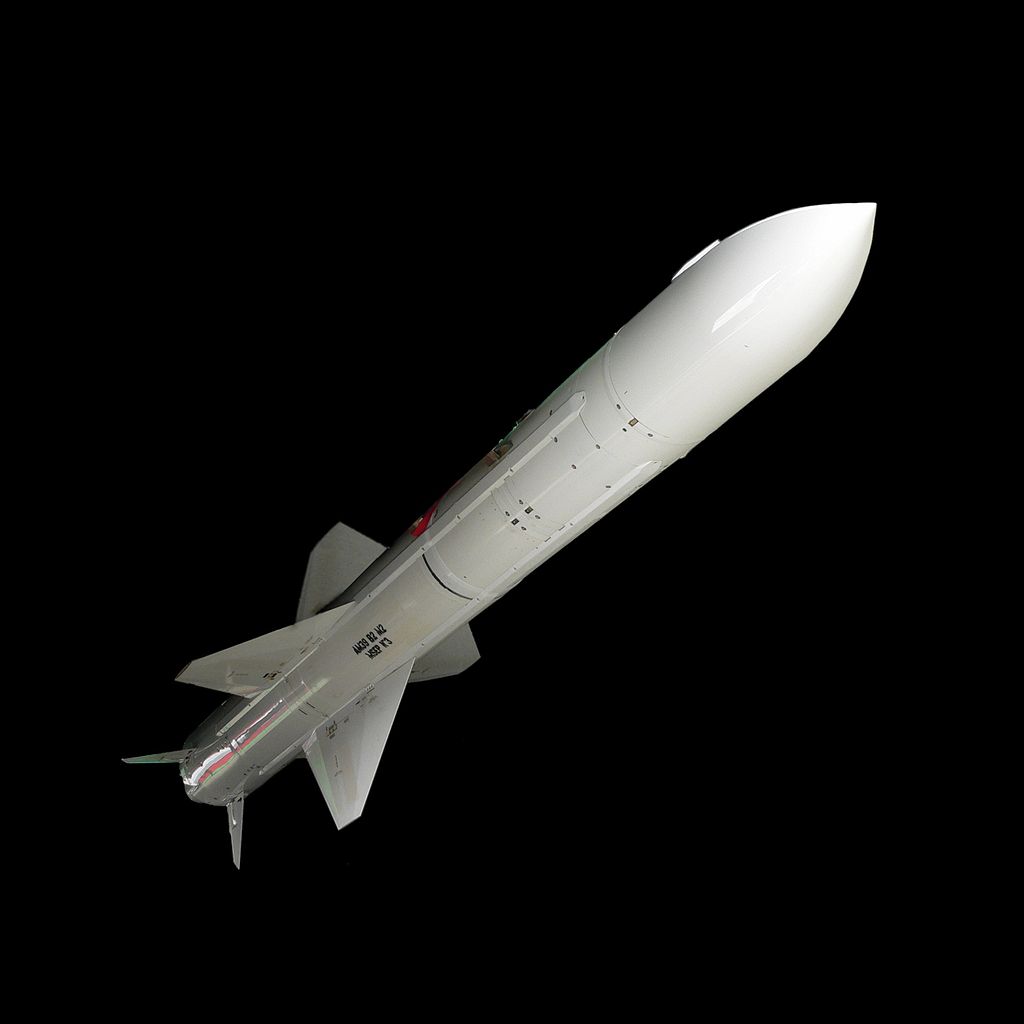
An Exocet missile
Radio systems had been among the casualties of the fire, and word had to be passed to other units using handheld survival radios carried for the ship's helicopters. Despite this, the first ship to arrive, two and a half hours after the missiles hit, was not an American warship but a Dutch salvage tug, stationed in the area to respond to victims of missile attack. Its help was gratefully accepted, and a hose from the tug was used to cool the missiles inside the magazine, with one sailor remaining at his post for 12 hours. Two hours after that, the destroyer Waddell arrived, providing medical support, supplies and fresh men to aid the battle aboard Stark.
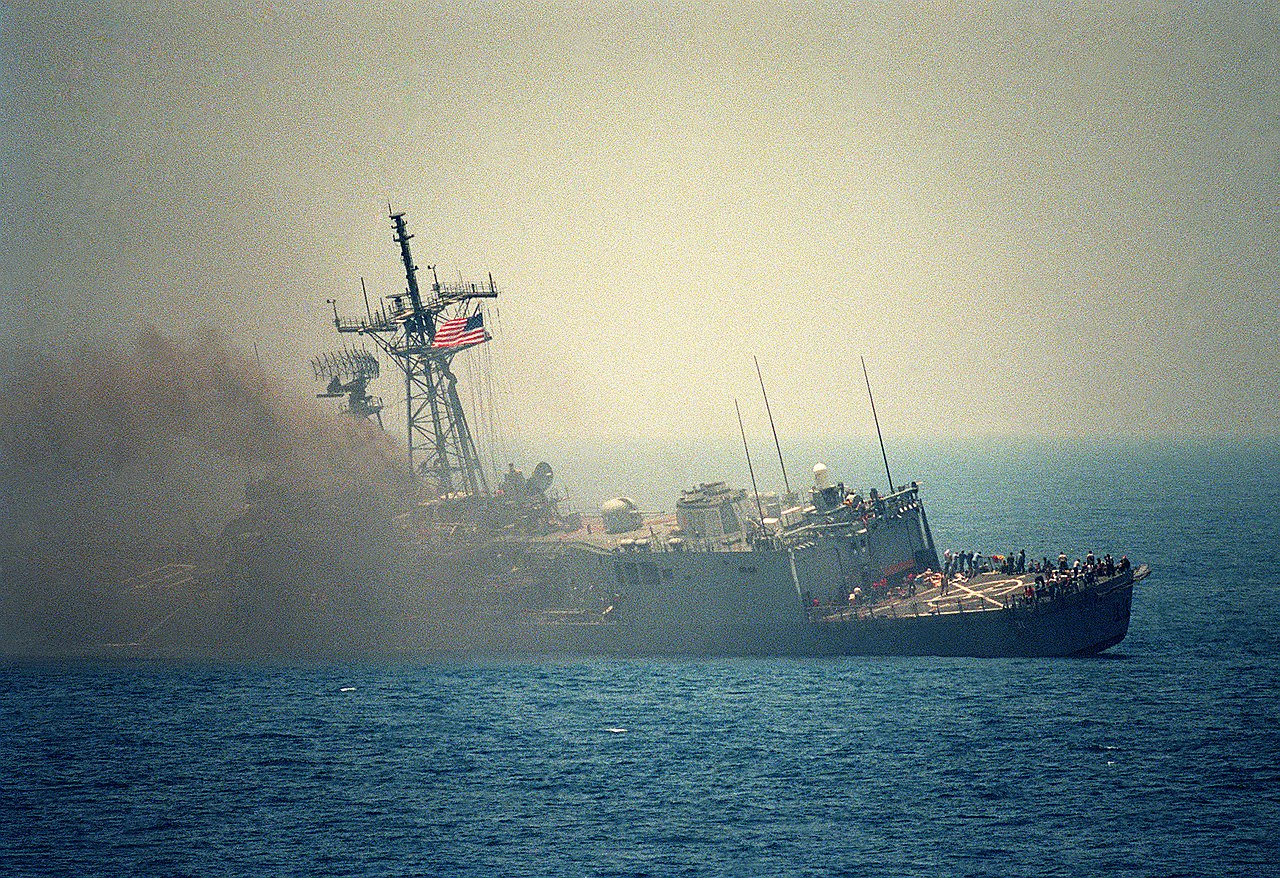
Stark lists while on fire
But even as her crew fought the blaze, Stark was being endangered by water. Both the firefighting effort and the broken firemain would pump hundreds of tons of water into the ship, where much of it stayed, well above the waterline. This began to endanger the ship's stability, and a party had to be organized to close off the firemain completely and punch holes in bulkheads to allow excess water to drain off. Despite the ship's list reaching 36°, they were successful in keeping her upright, and with supplies and a few personnel flown in from nearby ships and bases, they were slowly able to push the fire back. Finally, at 1700 the next day, the fires were extinguished, although "reflashes" continued to ignite for another day. Later that day, a firefighting party from another ship found the warhead of the first Exocet, which, miraculously, had not cooked off despite the intense heat. Stark was taken under tow by the destroyer Conyngham, finally arriving in Bahrain on the evening of the 19th.
Waiting there were four members of the crew who had fallen overboard in the initial moments after the impact, and had spent the night afloat in the Arabian Gulf, surviving despite the poisonous water snakes and sharks that teemed in the water. A Bahraini helicopter had spotted them and plucked them from the Gulf, while a fifth survivor was picked up by Waddell. Their survival was welcome, but had to be balanced against the loss of 37 crewmen, many of whose bodies were still in their bunks.
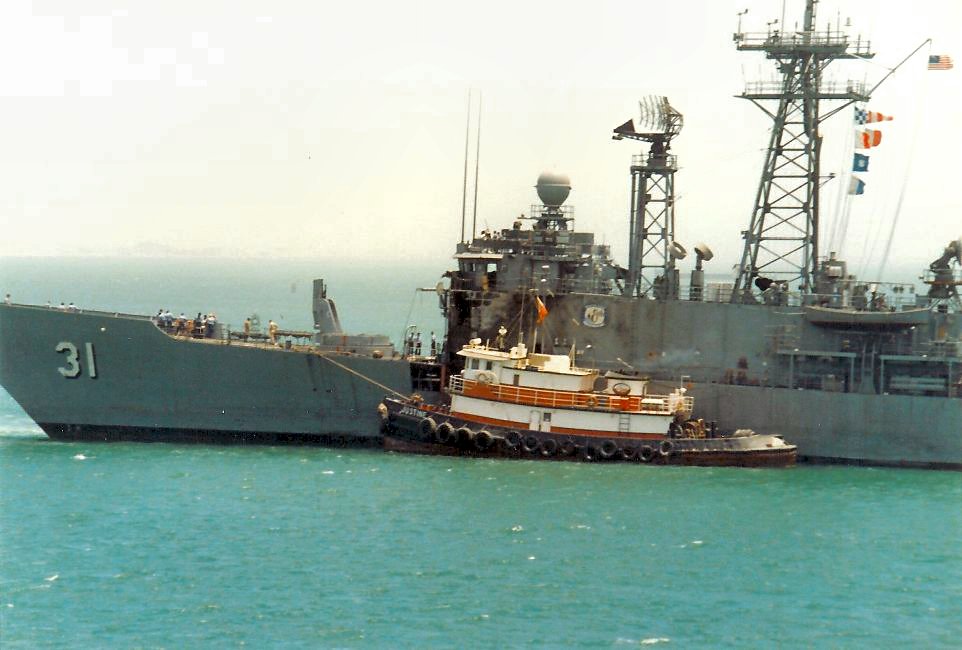
The obvious question in the days after the attack was how something like this had happened, particularly once information began to come out about the rather casual way Stark's crew had approached the potential threat, leaving the Phalanx off and not even warning their attacker until after it had launched its missiles. The Captain, Glenn Brindel, had been extremely concerned with passing an upcoming inspection and not provoking an international incident, and had repeatedly failed to pass on information about Iraqi operations to his crew. The Navy's investigation recommended court-martials for Capt. Brindel and two of his subordinates, and Brindel took the unusual step of disclaiming responsibility for their conduct.4 Ultimately, Brindel and one of the officers left the Navy immediately, while the third man received a letter of reprimand that effectively killed any chance of promotion. This was probably the best available option. While there were obvious failures of readiness, Stark was operating in a complex environment, teeming with neutrals as well as enemies, and while a more aggressive response might have avoided this incident, too much aggression could have tragic consequences, as Vincennes would demonstrate a year later.
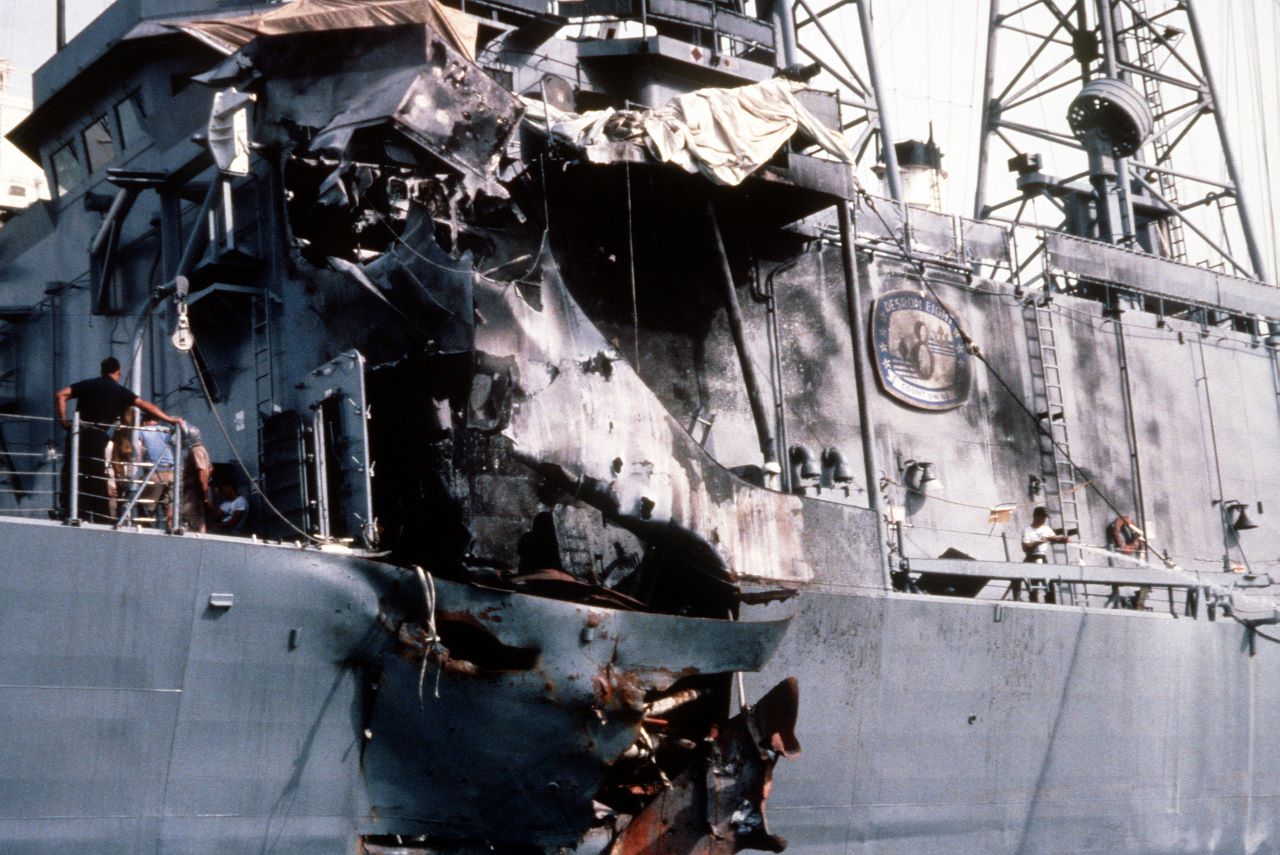
Although it was an Iraqi missile that had struck the ship, the Reagan Administration was quick to turn the event into a weapon against its real enemy. Iran was blamed on the basis that it refused to negotiate an end to a war that had already stretched for 7 years. In this, they were aided by Saddam's public acceptance of responsibility, and prompt agreement to pay $27.3 million to the families of those killed aboard Stark. There's more than a little bit of truth to blaming Iran, provided we ignore Saddam's decision to go to war in the first place. And while theories that it was a deliberate attack floated around, they seem implausible given the potential diplomatic blowback faced by Iraq, who had been getting more and more American support as the US was drawn deeper into the Gulf. It was almost certainly a tragic accident, with one version stating that the Iraqi pilot got confused about which scale his radar was on, thus thinking that Stark was in the declared exclusion zone instead of 10 miles or so outside of it. Even if this version isn't true, the Iraqi Air Force had never been particularly careful about target identification, or even making sure that its pilots were in range before firing Exocets at them.
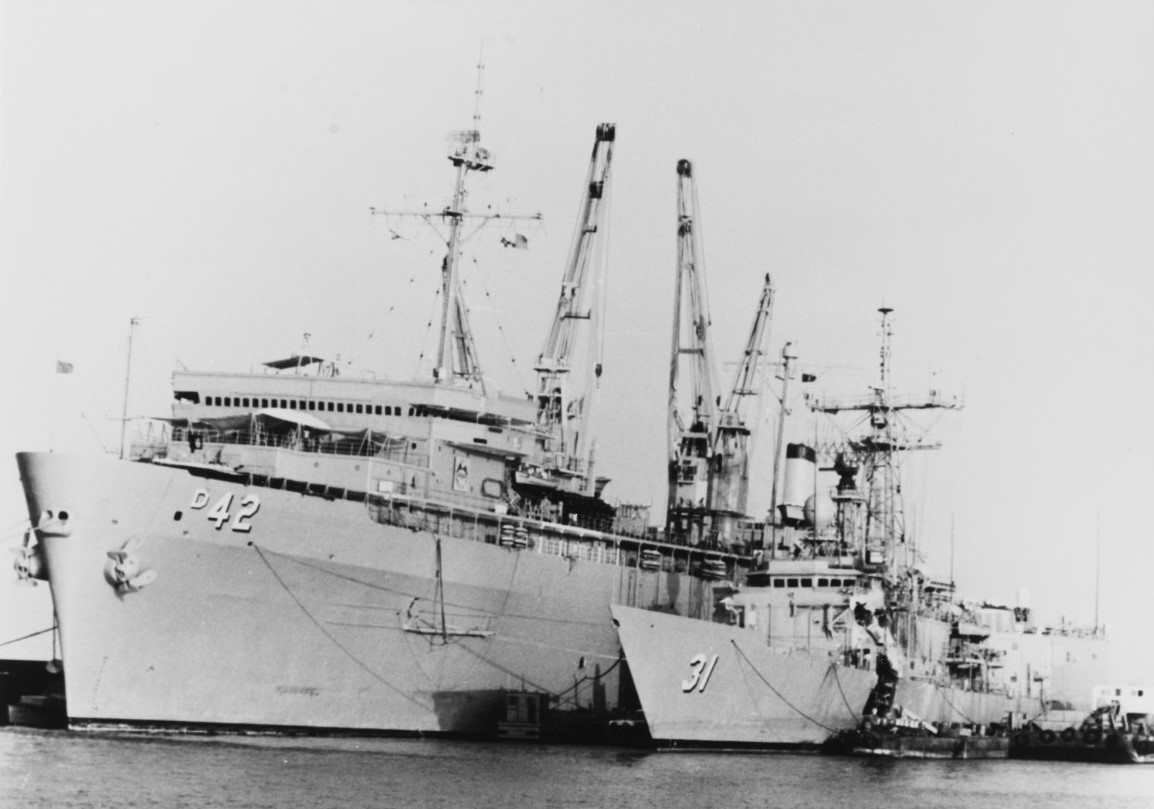
Stark under repair alongside destroyer tender Acadia
But perhaps the most remarkable portion of the whole affair was the survival of the Stark. Although slightly smaller than HMS Sheffield, sunk by fires from a single Exocet five years earlier, her crew had successfully battled the fires from not one but two hits despite the loss of 37 of their comrades, and every account would praise their performance in dealing with the blaze. Ultimately, Stark would return to the US under her own power, and after repairs would serve until 1999. But her ordeal had triggered far greater scrutiny of the Reagan Administration's policies in the Middle East, and it is there we will pick up next time.
1 There's an interesting side-story here. Up until about 10 years ago, the story was that the Iraqis had somehow jury-rigged a Mirage F1 to carry two missiles, with references in some books to "the plane obviously being difficult to control because of the load". It wasn't until aviation historian Tom Cooper (who was gracious enough to answer some questions I had on the matter) started looking into the history of the Iraqi Mirage F1 force that the truth came out. ⇑
2 The ESM situation demands a brief comment. It appears that the SLQ-32 picked up the plane's radar when it locked on for about 10 seconds prior to firing each missile, although they obviously didn't understand that was what was happening. It's likely that the SLQ-32 didn't pick up the missile's seekers, probably because the threat database was focused on Soviet systems, although the audible alert was turned off and the system's records were destroyed in the subsequent fire. ⇑
3 Note that Exocet uses a solid rocket motor, which has its own oxidizer, making it effectively impossible to extinguish. ⇑
4 In fairness to Brindel, his exemplary efforts to ensure his crew's proficiency in damage control may have saved the ship, but "the Captain has full responsibility for his ship" is a cornerstone of naval tradition. ⇑

Comments
Is the implication here that the ships generally were underequipped for damage control (in terms of OBA on hand, etc.), or that the Stark was in the long tail of surviving something that "should have" sunk the ship under more normal circumstances?
Does this mean that Brindel claimed they ignored his orders to the point where he wished to wash his hands of responsibility for them, or is there something else that is implied by "disclaiming responsibility"?
Also, you have Brindel with an extra l a few times (Brindel vs Brindell) in the writeup.
Some of both in terms of being underequipped versus surviving a fire she "shouldn't" have. The USN learned quite a lot (and her survival probably also rested on lessons from Sheffield et al, which had been conveyed to the USN) but at the same time, there are points where you have to say "this isn't worth saving" and Stark was pretty close to that.
Something else, and to be clear, he didn't make a particularly compelling case and quickly reversed himself. His theory, as far as it makes sense, was that they should have taken action sooner and done more stuff, but he had to admit that they hadn't violated standing orders or anything remotely like that. In practice, he had not conveyed an urgency for force protection, in contrast to several other Captains in the area. There was a case where a Mirage got close to Coontz a few days earlier, and they responded a lot more aggressively, for instance.
Oops. Fixed now.
Revision requests:
-Link to Part 1 please? It's been a while. -The use of "And" to start sentences in the second and second-to-last paragraphs was confusing; context made it unclear what statements were being expanded upon.
Many thanks!
Oops on the link (pure error on my part) and I do think you're right about those sentences. Fixed.
(This one may have been chopped up more than usual for me.)
If being "extremely concerned with passing an upcoming inspection" results in the ship being unprepared for actual operations that strongly suggests that the wrong things are being inspected.
Not necessarily. There are lots of different things that contribute to combat readiness, and an inspection in one area is likely to pull attention away from others. In this case, it was an engineering inspection, which is definitely an important thing, even if Brindel focused on it too much.
"In this case, it was an engineering inspection, which is definitely an important thing, even if Brindel focused on it too much."
Would it be impolite of me to ask why STARK was getting an engineering inspection in a !@#$%^& war zone?
Mike
While the part where the inspection helped might imply bad things about their readiness at other times (if they're supposed to have 300 OBA canisters at all times but this is routinely ignored when the inspectors aren't looking) or not (if they're normally supposed to have 100 and the extras were for exercises during and/or before the inspection).
The 2001 manual (i.e. after this incident might have changed standards) says 216 OBA canisters in a typical repair locker, and a firefighting team using ~8 every ~30min.
The USN later switched from OBAs (rebreathers) to open-circuit air tanks, despite those probably being much heavier; I don't know whether that was to have the ability to refill them on board, or for improved peacetime safety (OBAs can cause fires and chemical burns).
I do not understant that "warming up" of Phalanx. What was the particular reason that it did not work?
@Mike
I think that the USN would answer that it wasn't a war zone, at least as far as the US was concerned. It's not entirely clear where the inspection would happen from the source I have to hand, but it might have been once Stark had left the Gulf. I did run across the factoid that the sort of engineering test run that Stark did just before the attack was prohibited in the Gulf by PacFlt policy, but LantFlt didn't have a similar bar in place.
@muddywaters
It was them having extras per everything I can see.
I suspect the switch to SCBAs was probably part safety (I am in aviation, and remember ValuJet) and part because I don't think filling those takes a ton of gear, and there's a lot of value in having a couple of diesel-powered compressors in the repair lockers so you can keep refilling them.
@StupidBro
There wasn't a system failure or anything. It just takes time to boot up computers, run self-tests, get hydraulics warmed up, etc. And that was time they didn't have.
Is not having the Phalanx permanently warmed up another sign that they didn't consider this a proper war zone? Or were they expecting to have enough warning, given that they had AWACS cover and were planning for Iranian attacks not friendly fire accidents?
(This was not the first, or the last, time that a missile defence system took too long to react because it wasn't starting from maximal readiness. However, you also don't want to cause a friendly fire accident, and using Phalanx around friendly traffic does risk that.)
I would say it's good evidence that they didn't think it was a real war zone. And in fairness, there hadn't been anything in the way of weapon use outside of a few specific boxes that the USN was careful not to be in. I don't recall if anything I read talked about what other ships did re Phalanx warming, but I would not be surprised if Stark had been on the more lax side there.
One things that struck me was the inability to flood/cool the missile magazine without the watermain. A portable sump pump, able to be plugged into the ship's power or a generator, seems like a simple thing to keep on hand for such emergencies. They could also be used as auxiliary water pumps to get water out of spaces is shouldn't be. I used to rent these to contractors working on pools and underground utility boxes when I worked at an equipment rental place, and they are cheap and compact so I am surprised they do not seem to be in the USN's damage control kit.
Oh, those kind of pumps absolutely are in the damage control kit, and I think one was used to temporarily cool the missiles before the salvage tug showed up. (In fact, it might have done the brunt of cooling inside the magazine, because I was working from multiple sources, and they differ on this point, so I went with the version I wrote first.) The problem is that they only had two, and even moving one forward was a significant effort.
@Manatee: IIRC they had aboard whatever was before the P-100 pump*; probably diesel powered? bean laid out the problems making them work. At least in the 00s/teens we also had portable electric pumps (literal sump pumps) that could be also used, assuming electricity was available (not always a safe bet, in fairness)
*Available on Ebay for just under $10K